With the burden of the world on his shoulders, Joe Louis rose to the event like no different athlete had ever completed previous to his rematch with Max Schmeling.
By 10 p.m. on the night time of June 22, 1938, the streets of America had been abandoned. Over 60 million Individuals, greater than half the inhabitants of the nation on the time, sat glued beside their radios ready to be taught if democracy would show superior to the Nazi regime that now dominated Germany and shortly would sweep throughout most of Europe.
Such was the burden on the 24-year-old shoulders of Joe Louis as he waited to slide between the ropes at Yankee Stadium to face Max Schmeling, the one man who had ever overwhelmed him. Arguably no athlete in historical past had ever confronted such a problem and no sporting occasion earlier than or since ever carried with it such huge geopolitical that means.
This was, in a single sense, only a prize combat however in actuality, its significance loomed a lot bigger that it was not likely a prize combat in any respect. Nor was it merely a younger man making an attempt to avenge his solely defeat. Within the phrases of 1 Boston sportswriter of the time the combat was far greater than something any athlete had ever confronted earlier than.
“Louis represents democracy in its good kind: the Negro who could be permitted to turn into a world champion with out regard for race, creed or coloration,” the author wrote. “Schmeling represents a rustic which doesn’t acknowledge this concept or ideally suited.”
Former heavyweight champion Joe Louis, essentially the most iconic fighter of the Thirties and ’40s (arguably of the twentieth Century), was born on Could 13, 1914.
The reality was that weight bore simply as closely upon the shoulders of Max Schmeling, the previous heavyweight champion who had knocked Louis out two years earlier and in opposition to his will and private beliefs turn into an emblem of the Nazi ideally suited of racial purity. Like Louis, Schmeling was an athlete not a politician however with a world battle on the horizon few noticed both solely in that gentle any longer.
Hammering dwelling that time, “The Angriff,” the newspaper mouthpiece of Nazi propagandist Joseph Goebbels, wrote the day of the combat: “On today two males will maintain a complete world within the utmost pressure.”
With the Nazis getting ready to launch an try to destroy the Jewish race, two prize fighters had come to New York not merely as boxers however as symbols of polar reverse political and social programs. Over 20 million Germans rose in the course of the night time to take heed to the three a.m. radio broadcast of the combat whereas over 2,000 of their countrymen had crossed the Atlantic in huge ocean liners, crusing previous the Statue of Liberty into New York harbor with Nazi swastikas rippling within the wind from the liners’ masts.
Germany noticed Schmeling as not merely a superior boxer to Louis however as a superior man. He was considered, unfairly it got here to be identified later, because the flag bearer for Nazi supremacy, a towering image of what Hitler referred to as his “grasp race.”
In fact Schmeling was no Nazi. He by no means joined the Nazi get together and actually would secretly conceal two younger Jewish youngsters in his dwelling 5 months later throughout Kristallnacht, the night time when brown shirted Nazis destroyed Jewish houses, synagogues and companies all through the nation, signaling the tip of any semblance of regular Jewish life in Germany.
Simply earlier than midnight on November 9, Gestapo chief Heinrich Müller despatched a telegram to all police items in Germany informing them that “in shortest order, actions in opposition to Jews and particularly their synagogues will happen in all of Germany. These are to not be interfered with.” Fairly, the police had been instructed to arrest the victims. Hearth firms stood by as synagogues went up in flames with express directions to allow them to burn. They had been to intervene provided that a hearth threatened Aryan-owned properties.
In simply two nights, greater than 1,000 synagogues had been burned or in any other case broken. Rioters ransacked and looted about 7,500 Jewish companies, killed a minimum of 91 Jews, and vandalized Jewish hospitals, houses, colleges, and cemeteries. The attackers had been usually neighbors. Roughly 30,000 Jewish males aged 16 to 60 had been arrested and despatched off to focus camps at Dachau, Buchenwald and Sachsenhausen.
These actions got here to represent the destruction of Jewish existence in Germany and put in danger Germans like Schmeling, who had agreed to cover away the teenaged sons of two Jewish pals, very possible saving their lives whereas placing his personal in danger. Solely years later, lengthy after the Nazis had been defeated in World Warfare II, did Schmeling’s actions come to gentle. That might give the world a special view of him than existed on June 22, 1938, the night time that turned Joe Louis from a boxer into an American icon.
Schmeling, each by temperament and necessity, had chosen to stroll a tightrope between Nazi image and non-political athlete. After his beautiful knockout of Louis two years earlier. Hitler was so elated he despatched flowers and a personal message of congratulations to Schmeling’s spouse “with all my coronary heart.” In response, Schmeling instructed a German newspaper reporter “For the time being I’ve to inform Germany, I’ve to report back to the Fuehrer particularly, that the considered all my countrymen had been with me on this combat, that the Fuehrer and his devoted folks had been pondering of me. This thought gave me the power to achieve this combat. It gave me the braveness and the endurance to win this victory for Germany’s colours.”
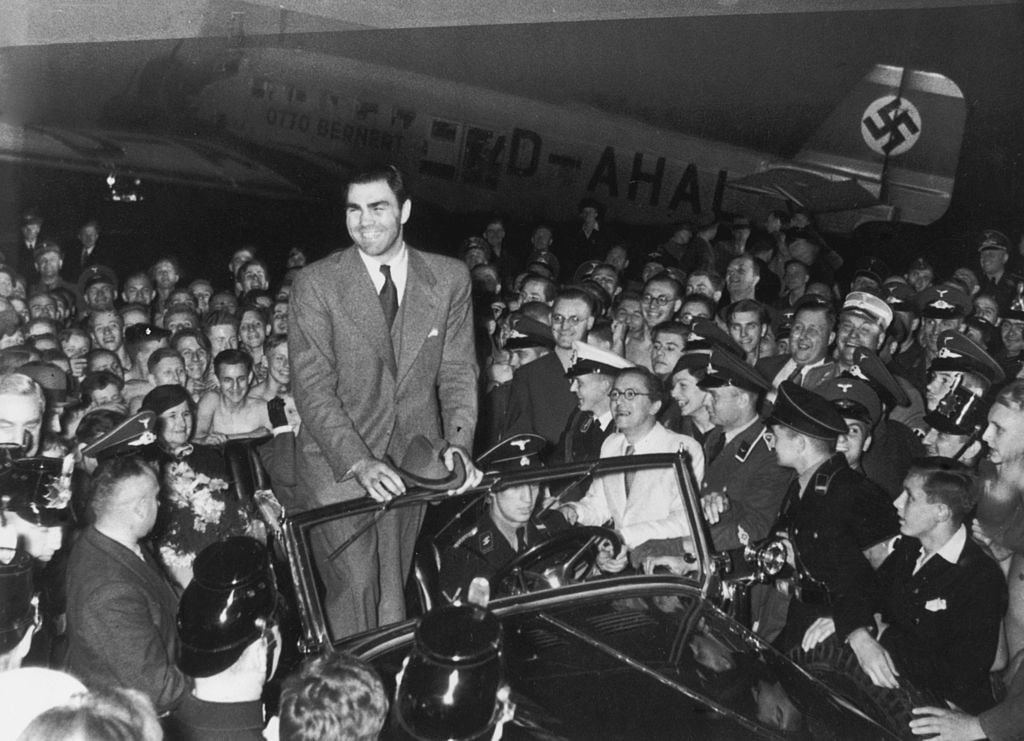
Max Schmeling returned to Berlin to a hero’s welcome after upsetting Joe Louis through Twelfth-round stoppage in New York Metropolis on June 27, 1936. (Picture by Hulton Archive/Getty Pictures)
It was not precisely an endorsement of the Nazi philosophy however a press release that might be interpreted nevertheless one selected. It led the Nazis to embrace Schmeling and most Individuals to be repulsed by him.
Schmeling believed that victory would result in a title shot in opposition to James J. Braddock however that went to Louis as a lot for political causes as boxing ones. Many boxing officers feared if Schmeling received Hitler wouldn’t enable him to defend it in opposition to American fighters. With the heavyweight title being the largest producer of income within the sport that was a state of affairs nobody outdoors of Germany would enable so Louis obtained the shot on June 27, 1937, knocking out Braddock within the eighth spherical. Ever the gentleman, Louis mentioned after the combat he wouldn’t acknowledge himself as champion till he defeated Schmeling.
After a lot backwards and forwards negotiations by Schmeling’s supervisor, Joe Jacobs, and New York boxing promoter Mike Jacobs, who had been paradoxically each Jewish, the combat was made. By then Germany had already annexed Austria and all through Europe the winds of battle had been howling.
Schmeling had been urged by Jack Dempsey to defect to America however he refused. Regardless of personally defying Hitler’s claims of racial superiority by saying, “I’m not a superman in any means” Schmeling remained a loyal German at a time when strains had been being drawn all over the world.
No matter his politics, Schmeling did turn into pleasant with Goebbels, whose mastery of propaganda fueled the rise of the Nazis and Schmeling’s place as an emblem of their beliefs. Not surprisingly Schmeling was greeted in New York with barely hidden hatred by the majority of American combat followers.
There have been pickets outdoors his lodge, the Anti-Nazi League demanded a boycott of the combat and a goodly variety of sportswriters – however not all – portrayed him within the worst gentle. On the similar time Joe Louis was assembly with President Franklin Delano Roosevelt on the White Home. Louis would later write in his autobiography that “I had my very own private causes (for eager to defeat Schmeling) and the entire damned nation was relying on me.”
What Schmeling was relying on was exploiting a fistic flaw he’d observed earlier than their first combat – a lazy left jab that left Louis susceptible to counter proper fingers as a result of he was sluggish to deliver his left again into defensive place. Schmeling beat Louis down with counter rights all night time, dropping him for the primary time in his profession within the fourth spherical and ending him within the 12th with two scorching proper fingers that left him face down on the ground as he was counted out. Individuals, each black and white, wept that night time.
Now an improved Louis would get his probability for revenge in a combat closely laden with political overtones. Unnoticed by Schmeling was that Louis had corrected that flaw. Now ready for him in entrance of 70,043 spectators at Yankee Stadium who had paid $1,015,012 to get in (the equal of over $20 million right now) stood maybe the best heavyweight who ever lived.
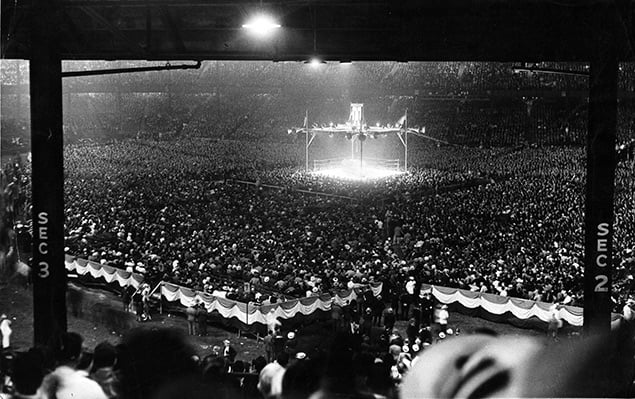
Yankee Stadium was crammed to capability for the Louis-Schmeling rematch. Picture from The Ring archive
At 24, Louis was on the top of his appreciable powers whereas the 33-year-old Schmeling was in decline, not that it will have mattered. There was little Schmeling may have performed that night time to cease Louis, who wanted solely 124 seconds to destroy the parable of Aryan superiority.
Barely 90 seconds into the combat, referee Arthur Donovan stopped the motion after Louis had battered Schmeling with a barrage of 5 left hooks and a crushing punch to the kidney that fractured the transverse means of the third and fourth lumbar vertebrae. In different phrases, the punch had damaged his again. When it landed sportswriters at ringside had been shocked to listen to Schmeling cry out in agony as his head slumped onto the highest rope.
Louis emerged from the impartial nook at Donovan’s sign to renew combating and attacked Schmeling with a viciousness few had beforehand witnessed. He knocked Schmeling down with a slashing proper hook to the face. Schmeling rose on the depend of three, a person adrift in an indignant sea of leather-based.
Louis despatched him down a second time and inside seconds once more dropped the towering image of German superiority. As Donovan started his depend, Schmeling’s coach, Max Machon, threw within the towel though that flag of give up carried no weight in New York.
As Donovan continued his depend, Machon leapt into the ring, forcing Donovan to wave his fingers over the fallen German. The combat was over at 2:04 of the primary spherical.
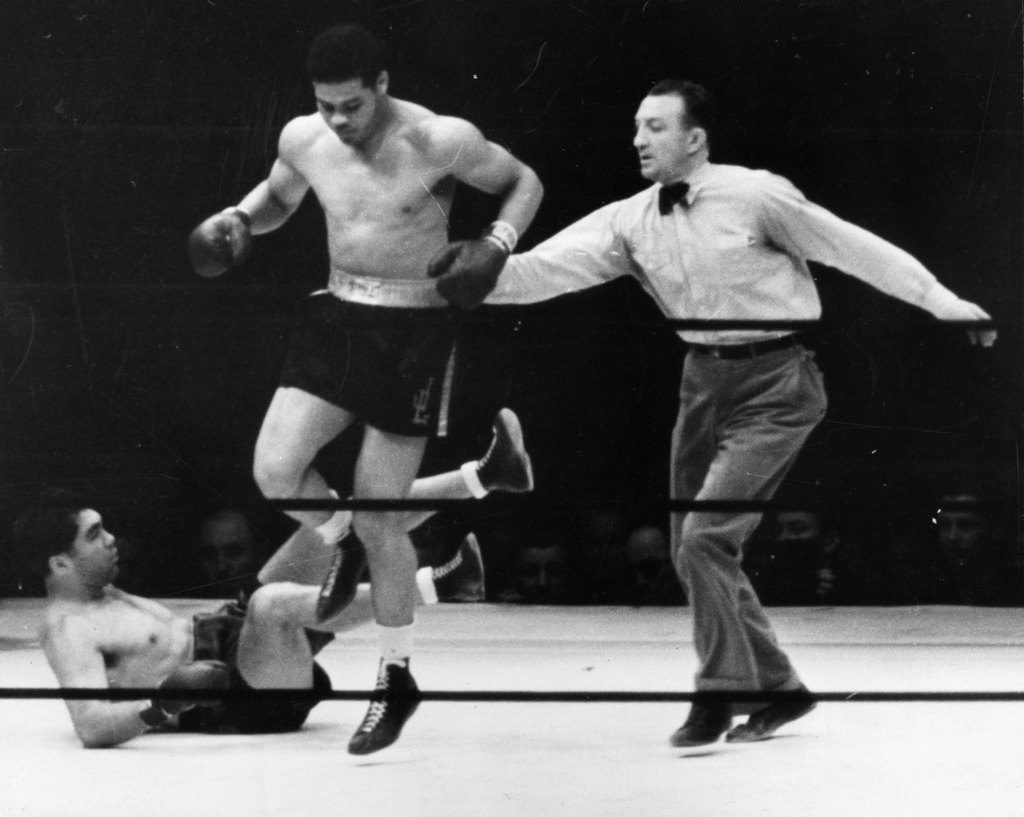
Joe Louis wasted no time in decking
Max Schmeling throughout the opening spherical of their anticipated rematch. Picture from The Ring archive
The subsequent day Frank Marshall Davis of the Related Negro Press wrote, “It was the triumph of a repressed folks in opposition to the evil forces of racial oppression and discrimination condensed – by probability – into the form of Max Schmeling.”
Famous sportswriter Heywood Hale Broun opined, “And 100 years from now, some historian could theorize, in a footnote a minimum of, that the decline of Nazi status started with a left hook delivered by a former unskilled car employee who had by no means studied the politics of Neville Chamberlain.”
Much less poetically maybe, bootblacks had been providing a Joe Louis shoe shine. It solely took two minutes and 4 seconds.
Sitting at dwelling at 80 Shanley Avenue in Newark that night time was eight-year-old Jerry Izenberg, a passionate baseball fan who would go on to turn into one of many nation’s most influential sports activities columnists, defending and befriending Muhammad Ali all through his life and supporting the combat for racial equality that for him started that night.
In his newly revealed memoir about rising up as a Jewish sports activities fan within the Thirties, “Baseball, Nazis and Nedick’s Scorching Canine”, Izenberg recalled his emotions that Thursday night time as he sat together with his household listening to Clem McCarthy’s name of the combat on NBC Radio.
“It was historical past, politics and Hitler that motivated (his father’s) clarification to me and my sister,’’ Izenberg mentioned of his father’s insistence they keep up late on a college night time regardless of the protests of their mom. “He instructed us in regards to the Nuremberg legal guidelines of 1935, which was the beginning of Hitler’s isolation, persecution and eventual homicide of Jews. At supper that night time, there was no discuss of Hank Greenberg or anything baseball.”
Izenberg recalled his father telling his mom, “It is a extra necessary lesson for them (than something in class). Joe Louis is a coloured man. He’s combating for all the coloured folks on this nation. Greater than that, he’s combating for us Jews as a result of Schmeling is representing Hitler. My outdated man was very flawed about that final.
“There was little question that night time as we gathered in the lounge across the radio that the fists of Joe Louis could be the fists of David, who in Biblical instances went in opposition to Goliath with simply 5 clean stones… “This was a combat that each fed and divided the feelings of America. It was us in opposition to them.”
After it was over, Schmeling was taken to Polyclinic Hospital the place he remained for a number of weeks, a person damaged in physique and spirit. Initially Schmeling complained that the decisive punch to his kidney that shattered his again was unlawful however he rapidly backpedaled from that. Hitler had no public remark however would later come to resent Schmeling’s quiet resistance to supporting the Nazi trigger and had him drafted into the Luftwaffe as a paratrooper late within the battle. He confronted minimal fight, primarily visiting German troops to carry their morale till he was arrested by British troopers in 1945 in northern Germany.
Mockingly the route the ambulance took to ship Schmeling to the hospital on June 22 wended its means by way of Harlem. Out the window Schmeling later claimed he noticed tons of of black Individuals dancing within the streets, bands enjoying as they hollered Louis’ title.” They weren’t alone of their jubilation, as Izenberg recalled.
“All by way of the combat my dad was on his ft, throwing punches and hollering,” Izenberg wrote. “So was I.”
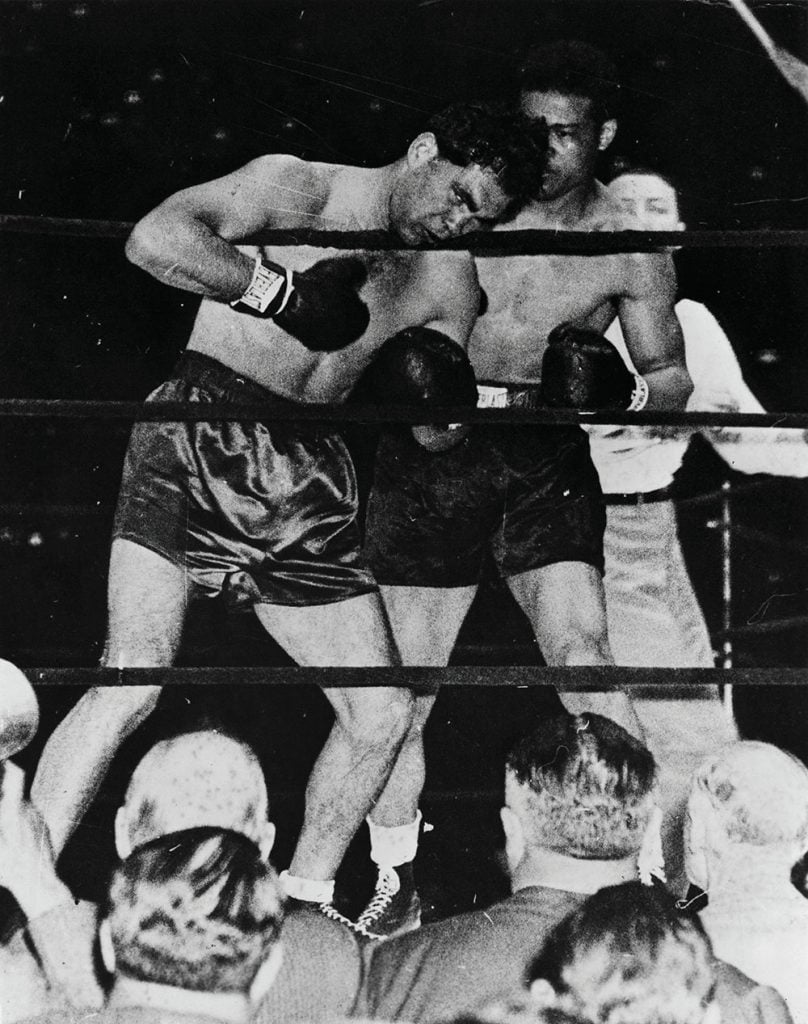
Has any prizefight held extra social and historic significance than Joe Louis’ one-round destruction of Max Schmeling? Writers are nonetheless fascinated by Louis.
Twenty 5 years later a black man in Grambling, Louisiana instructed Izenberg he had reacted the identical means, confirming for the author what he knew the combat had meant to all Individuals, however particularly Jews and folks of coloration.
“Many years later, I nonetheless take into consideration that night time when miles aside, a white man and a black man who had by no means met, my dad and Calvin Wilkerson, shared a hero. ‘I by no means met your daddy however on that night time we had been brothers beneath the pores and skin,’” Izenberg quoted Wilkerson saying.
Louis turned a nationwide hero and remained one for the remainder of his life however ended up broke and hounded by the IRS for again taxes till his dying.
Schmeling by no means fought for the heavyweight title once more however in 1947 was cleared of the “Nazi-taint” by a British led “de-Nazification’’ courtroom. He had a short and unsuccessful return to the ring earlier than retiring in 1948 on the age of 43. After the battle he turned an emblem of the so-called “good German” who had resisted the Nazis. Ultimately he was awarded a profitable Coca-Cola distributorship in Germany by James Farley, the previous head of the New York Boxing Fee and a Coke govt that made him a multi-millionaire.
In 1989, throughout a tribute to Schmeling in Las Vegas, Henri Lewin, proprietor of the Sands Lodge and On line casino, revealed he was one of many younger boys Schmeling had hidden throughout Kristallnacht.
Years earlier Schmeling met Louis in a Chicago nightclub and started to elucidate he was by no means a Nazi. Louis minimize him off saying, “Max, there’s nothing to elucidate. We’re pals. It’s all over.”
Joe Louis and Max Schmeling remained pals for the remainder of their lives.
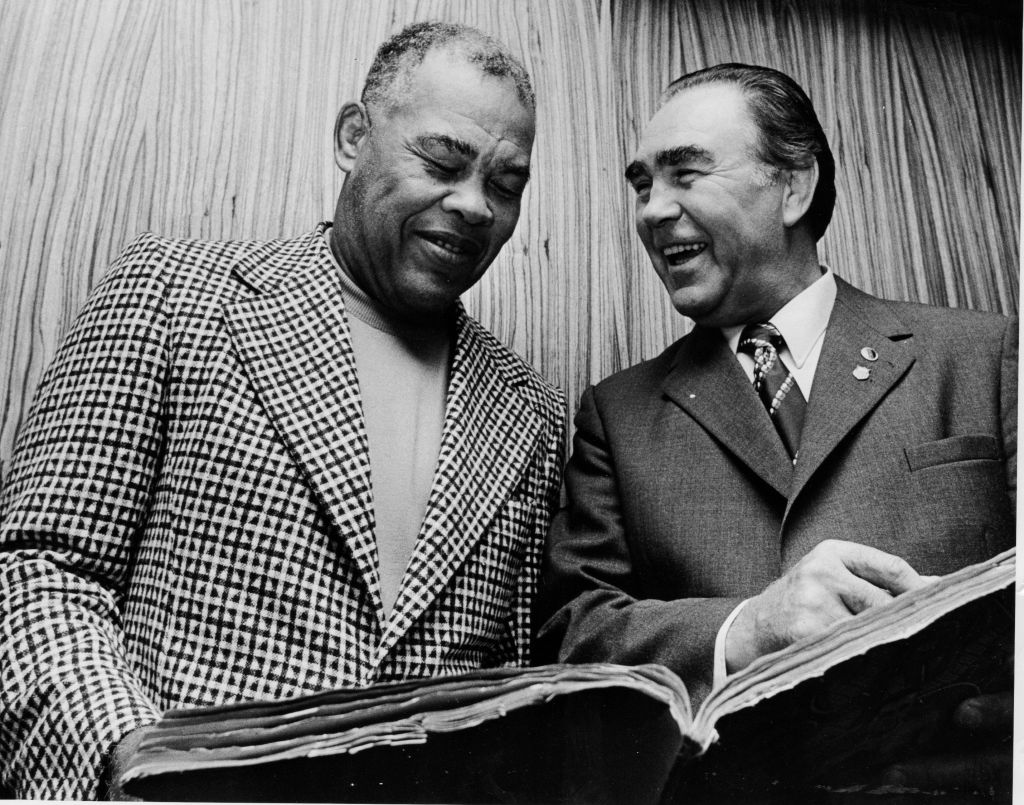
Louis and Schmeling reminisce over a scrapbook on the Nassau Coliseum in Uniondale, N.Y., on August 9, 1973.